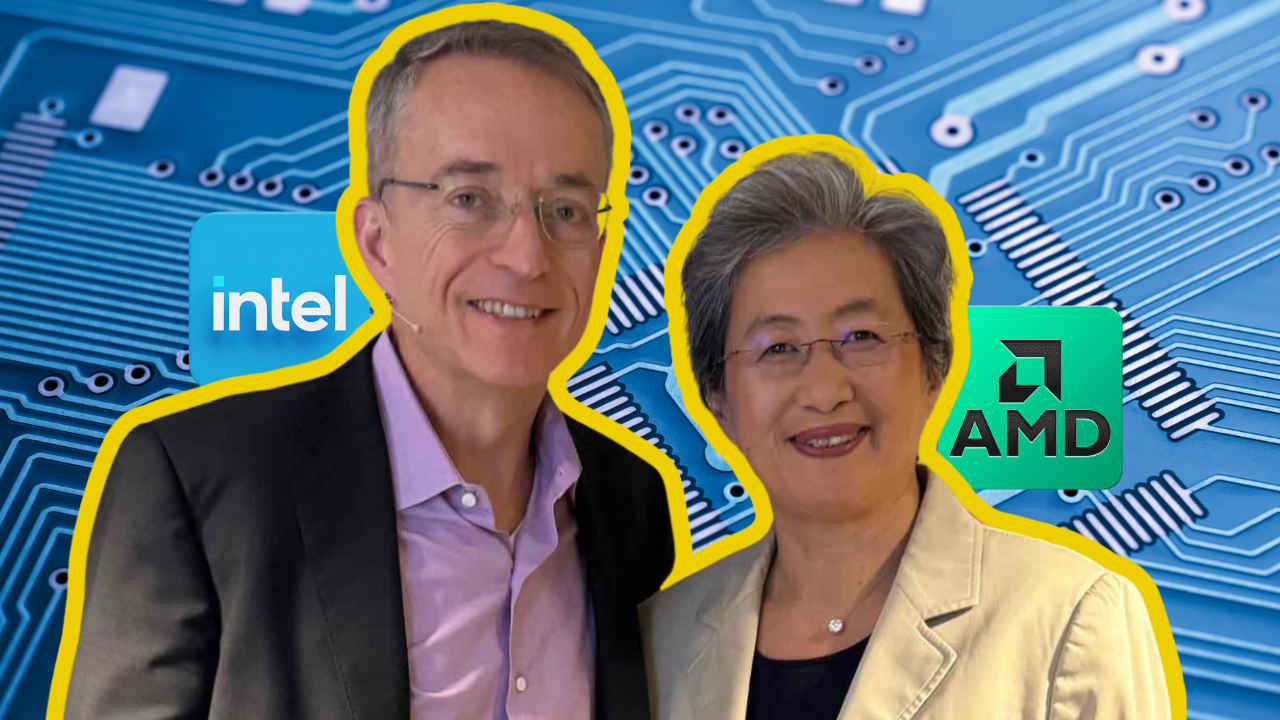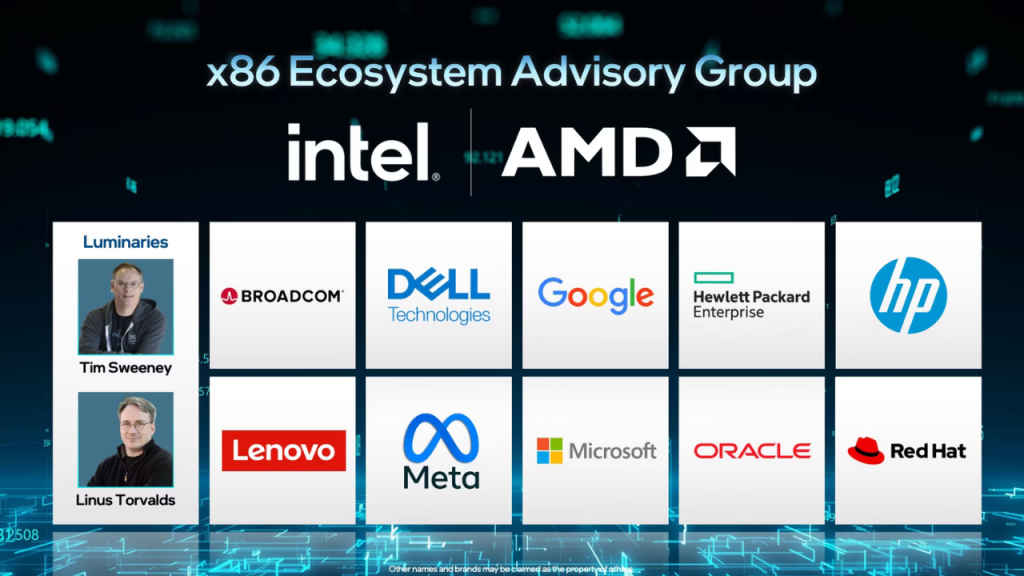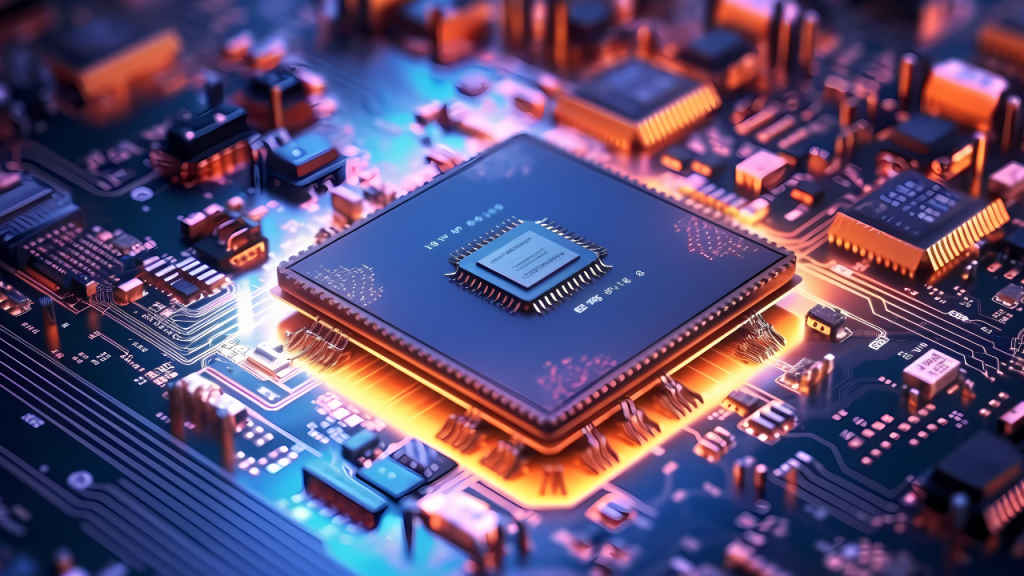Intel-AMD join forces, as x86 fights the rise of ARM

Intel and AMD – archrivals for decades – are teaming up. Yes, you read that right – I nearly did a double-take myself. The two giants of the computing world have announced the formation of an x86 ecosystem advisory group. Their common goal? To accelerate innovation and keep the x86 platform not just alive, but thriving in an era where the competition is fiercer than ever.
It’s like Batman and Joker, Spiderman and Green Goblin, or Harry Potter and Lord Voldemort setting aside their differences to tackle a common enemy that’s threatening to grow into an existential threat – the rapid emergence and growth of ARM-based chips, championed by companies like NVIDIA, Qualcomm, Apple, MediaTek, and Samsung.
Also read: Intel launches powerful Xeon 6 and Gaudi 3 AI chips amid stiff competition
These ARM processors are no longer confined to our smartphones and tablets; they’re making serious inroads into laptops, desktops, and even servers – territories traditionally dominated by x86 architecture. The unmistakably rising tide of ARM architecture has pushed Intel and AMD into an unlikely but necessary alliance.
For over 40 years, x86 has been the cornerstone of modern computing. It’s the architecture that powered the PC revolution, the data centers that run our internet, and Intel and AMD have been the titans of this space – pushing each other to innovate through intense competition.
But times are changing. The announcement of the x86 ecosystem advisory group, which includes tech luminaries like Linus Torvalds and Tim Sweeney, along with founding members such as Broadcom, Dell, Google, HPE, HP Inc., Lenovo, Meta, Microsoft, Oracle, and Red Hat, signals a significant shift in strategy.

“We are on the cusp of one of the most significant shifts in the x86 architecture and ecosystem in decades,” said Pat Gelsinger, Intel’s CEO. “We proudly stand together with AMD and the founding members of this advisory group, as we ignite the future of compute.”
Lisa Su, AMD’s Chair and CEO, echoed this sentiment: “Establishing the x86 Ecosystem Advisory Group will ensure that the x86 architecture continues evolving as the compute platform of choice for both developers and customers.”
Also read: AMD unveils Instinct MI325X AI chip, challenging Intel and NVIDIA
United against a common foe: ARM
So, why now? Why are Intel and AMD setting aside their fierce rivalry to collaborate? The answer lies in the meteoric rise of ARM-based architectures.
Apple’s introduction of its M1 and subsequent M-series chips has been nothing short of revolutionary. These chips deliver impressive performance with remarkable energy efficiency, challenging the long-held belief that x86 processors are the only viable option for high-performance computing tasks.
Qualcomm and MediaTek are also pushing ARM-based processors into new territories, with ambitions to power everything from laptops to data centers. Even Microsoft has been experimenting with ARM-based Windows machines, and let’s not forget that AWS offers ARM-based instances in its cloud services.
Let’s not forget NVIDIA, the behemoth of graphics processing that’s been making significant inroads into the CPU arena, especially with its sights set on AI and machine learning. While Intel and AMD have dominated traditional computing with x86 architectures, NVIDIA’s focus on ARM-based processors for AI workloads presents a formidable challenge. ARM’s architecture offers efficiency and scalability that x86 has seemingly struggled to match in the rapidly evolving AI landscape.
Also read: Battleground AI: The Great AI Chip War Heats Up
The emergence of AI has shifted the battleground. ARM architectures, with their power efficiency and flexibility, have become the go-to for AI applications, AI accelerated workloads, and even high-performance computing. NVIDIA’s advancements in AI accelerators and their ARM-based initiatives are eating into territories once securely held by x86 veterans like Intel and AMD.
The ARM ecosystem is growing, and it’s not just about hardware. The software support for ARM architectures has improved dramatically, making it easier for developers to build and optimise applications for these platforms.
It’s all about rejuvenating x86 compute
Intel and AMD’s creation of the x86 ecosystem advisory group is a strategic move to counter this computing shift to ARM-based platforms. By collaborating, Intel and AMD no doubt aim to streamline development, ensure compatibility, and rejuvenate the x86 platform. Their common goal is to make it more appealing for developers to create innovative solutions without the fragmentation that has sometimes plagued the x86 ecosystem.
The advisory group aims to “unite industry leaders to shape the future of x86 and foster developer innovation through a more unified set of instructions and architectural interfaces.” This means simplifying architectural guidelines to enhance software consistency and interfaces across x86 products from both Intel and AMD.
Also read: Game changer: Qualcomm powered enhanced Microsoft CoPilot+ AI PCs are here!
As Satya Nadella, Microsoft’s CEO, put it, “x86 has been foundational to modern computing for over four decades, and we want to ensure it continues to evolve and benefit everyone going forward.”
This Intel-AMD x86 collaboration could lead to several positive outcomes. First and foremost, developers could enjoy a more consistent experience when building applications for x86 platforms, reducing the friction caused by differing implementations. A unified approach might also streamline the introduction of new features and technologies, benefiting customers who rely on x86 systems. Businesses and consumers might feel more secure investing in x86 technologies, knowing there’s a concerted effort to keep the platform competitive and growing in the long-term.

But the stakes are high. ARM’s advantages in power efficiency and scalability are significant, especially in a world increasingly focused on energy consumption and mobile computing. The x86 alliance will need to address these challenges head-on.
Can x86 bounce back?
It’s too early to tell whether this alliance will reinvigorate the x86 platform or merely slow the tide of ARM’s advance. The computing landscape is evolving rapidly, with AI workloads, custom chiplets, and advancements in 3D packaging reshaping what’s possible.
Also read: NVIDIA becomes world’s most valuable company: 3 reasons why
The success of this initiative will likely hinge on whether Intel and AMD can genuinely collaborate to deliver meaningful improvements without stifling competition. The involvement of other industry heavyweights suggests there’s broad support for strengthening the x86 ecosystem, but execution will be key.
As Hock Tan, President and CEO of Broadcom, noted, “We are at a crossroads in the history of computing. The x86 architectural decisions we make today will affect programming models, frameworks, and systems for decades to come.”
As someone who’s witnessed the ebb and flow of tech battles over the years, I can’t help but be intrigued. The merging of forces between Intel and AMD could lead to innovations we haven’t even imagined yet. Or it could be too little, too late. Either way, the computing wars are heating up once again, and the outcome will surely shape the digital technology we rely on today and in the future.
Also read: Computex 2024: Intel CEO Pat Gelsinger outlines AI leadership, despite stiff competition
Jayesh Shinde
Executive Editor at Digit. Technology journalist since Jan 2008, with stints at Indiatimes.com and PCWorld.in. Enthusiastic dad, reluctant traveler, weekend gamer, LOTR nerd, pseudo bon vivant. View Full Profile




